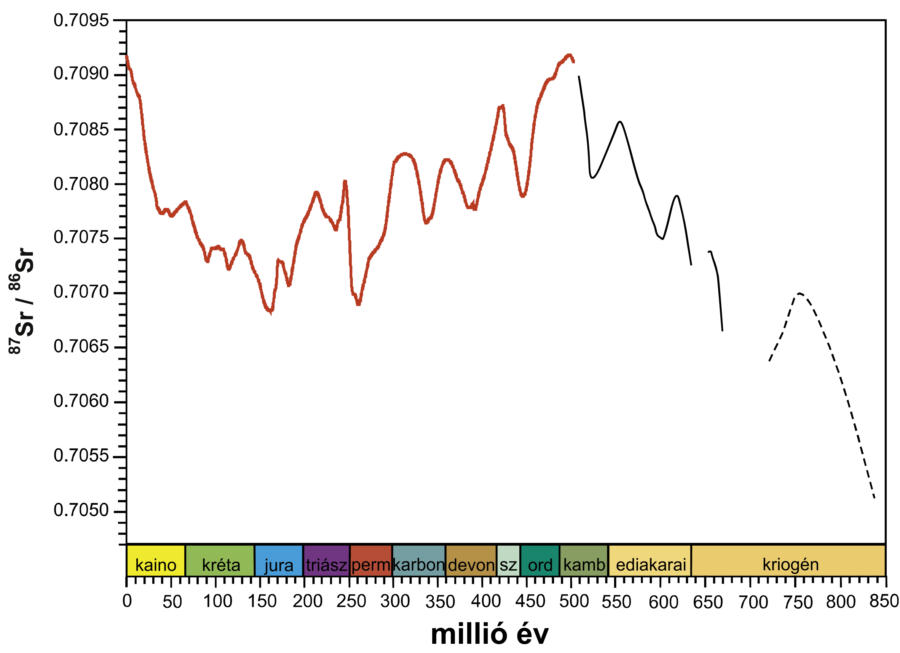Strontium isotope stratigraphy and its applications
Abstract
The late 20th century revival of stratigraphic methods resulted in a burst of chemostratigraphic techniques and their applications, including the rise of strontium isotope stratigraphy. This method utilizes the measured ratio of radiogenic 87Sr and non-radiogenic 86Sr isotopes in samples from sedimentary stratigraphic sections. The residence time of marine Sr, in excess of one million years, is three orders of magnitude longer than the mixing time of the world ocean, resulting in homogenous Sr isotopic composition of seawater that is recorded by marine carbonate phases precipitated in isotopic equilibrium, biogenic low-Mg calcite being the most faithful among them. The marine Sr isotopic ratio has been changing continuously in both directions throughout the Earth history, controlled by the ratio of fluxes of 87Sr, derived mainly from weathering of continental crustal rocks and delivered to the ocean by riverine influx, and 86Sr, from juvenile mantle-derived material primarily from volcanic and hydrothermal activity along mid-oceanic ridges. An increasingly reliable, high-resolution reference curve has been constructed form the Neoproterozoic and the entire Phanerozoic, using independently (mostly biostratigraphically) dated samples. Dating of new samples of only broadly constrained age yields the best results, with better than 1 m.y. precision, in steep intervals of the reference curve, i.e. for times of high rate of change in 87Sr/86Sr. Here we briefly review the theoretical and historical background of the method, the practical issues of sample selection and analytical techniques, and provide case studies from some areas of successful use of Sr isotope stratigraphy. Examples include the Toarcian Jenkyns event, the end-Cretaceous event, and glacial periods in Earth history, when beside their significance for stratigraphic correlation, Sr isotopes provide clues to the causation of major events in Earth history. Sr isotope stratigraphy has been effectively used to solve correlation problems of shallow marine carbonate platforms, where available biostratigraphies are commonly of low-resolution and fraught with problems of global correlation with pelagic zonation schemes. The method has been recently introduced in Hungary to tackle local and regional correlation problems, including issues of global correlation of sedimentary sequences of the Paratethys, characterized by partly endemic faunas. This review intends to pave the way of incorporating Sr isotope results into regional stratigraphic syntheses and to promote further use of this method in Hungary.
















